Tamiya 1:48, Mitsubishi Isshirikko type 11 G4M1 “Betty”
This one I've build a couple of years ago. Tamiya did a very great job on this one! It was a nice plane to build. Bought the Eduard mask for the canopy, blisters and tailgun parts but it was a PITA. They were thick and peeled of after applying ( it was the old green vinyl stuff from Eduard). I used them as a template to cut my own from masking tape.
They kit is painted with Tamiya acrylics, IJN Grey, IJN Green, Lemon yellow with a drop of red for the IFF. Props are sprayed with Revell enamel silver, chipping is done with Revell silver. Exhaust pipes are painted with various "rusty" colours, exhaust stains are sprayed with Revell black ,brown, mud and sand colours.
Build in Dutch; http://plakkers-inc.nl/viewtopic.php?f=8&t=1307
Best regards;
Ulrich Schütt
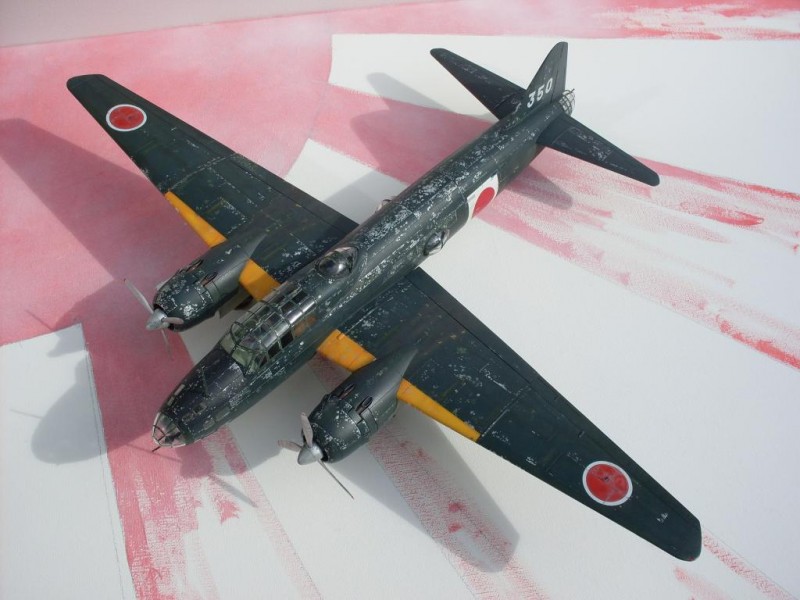
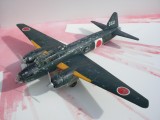
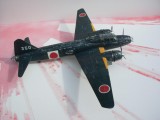
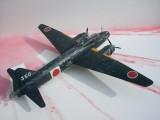
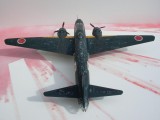
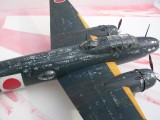
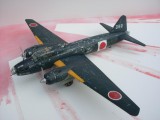
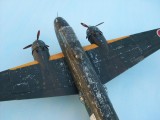
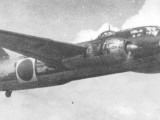
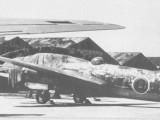
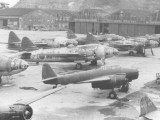
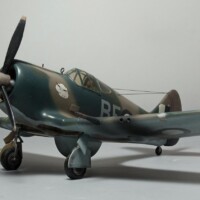
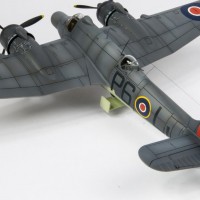
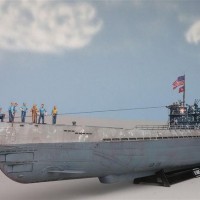
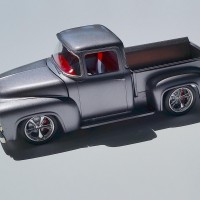
Great looking build, Ulrich...attention to detail is awesome! I've often wondered about the propensity for the Japanese paint-chipping thing, though. Yours, for example, has what seems to me, as "chipped" paint in places where one wouldn't expect 'normal' wear & tear to occur. You would expect to see this around access panels and walkways, but some builds are done in this technique "to the max". The only explanation I can come up with in my own mind, is that the Japanese used inferior primer and/or paint (and didn't bother to re-paint anything either). Your build looks great, as I said, but I was wondering if you - or anyone else - has a viable answer as to why this anomaly occurred so frequently. Thanks.
Thanks for your compliment! Craig.
I believe the reason for the heavy flaking of the paint is due to not using primer at all. ( and not to "inferior" paint.)
Not all japanese planes did lose their paint that quick, it depended on the manufacturer ( a good example is the famous Zero, these were build by Nakajima and Mitsubishi. And if I'm correct only Mitsubishi primed their Zero's and didn't "weather" that fast.)
The original "Ame-iro" color was applied over primer, and being a gloss paint didn't weather that badly. Those aircraft were also primarily aboard aircraft carriers, where "dings" were promptly painted due to corrosion control in a saltwater environment (deadly to aluminum structures if left esposed)
Yep, very nice indeed.
Thank you for your compliment!
Excellent paint job!
Very nice work, particularly the "dings".
FWIW, it's become known in perhaps the past 10 years or so that each Japanese manufacturer had their own take on camouflage colors. Nakajima is a blueish-green while Mitsubishi is more greenish-green. Tamiya's original "IJN Green" is actually the Nakajima color. Their more recent "IJN 2" color is the Mitsubishi color. Their "Japanese cockpit color" is for Mitsubishi aircraft (Nakajima's being more like US Interior Green). Passed on here for future reference.
The fact that this model is in the original Tamiya color is not something to complain about - even Tamiya took 30 years to figure it out. 🙂
The model gets a "10" for overall talent.